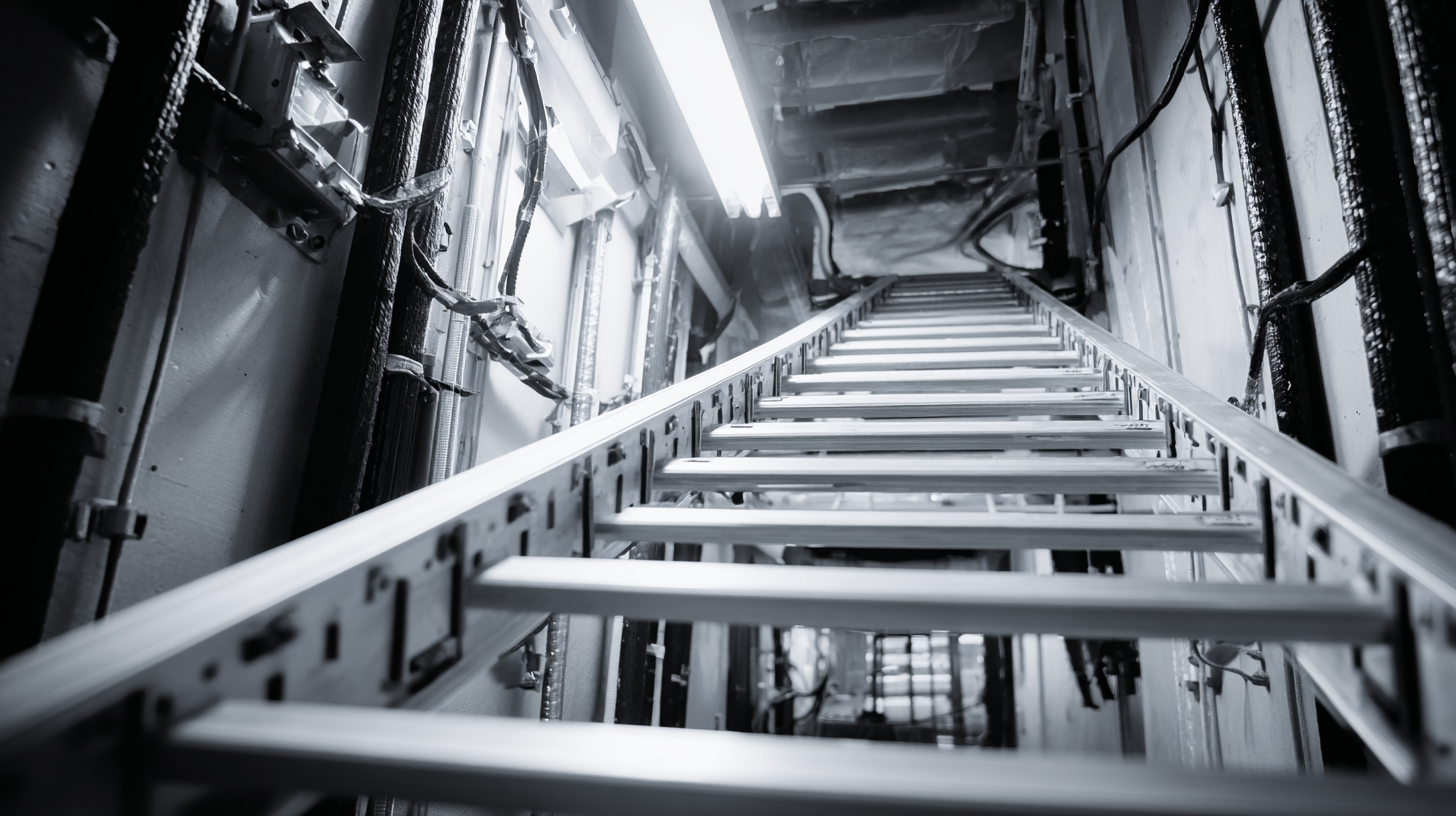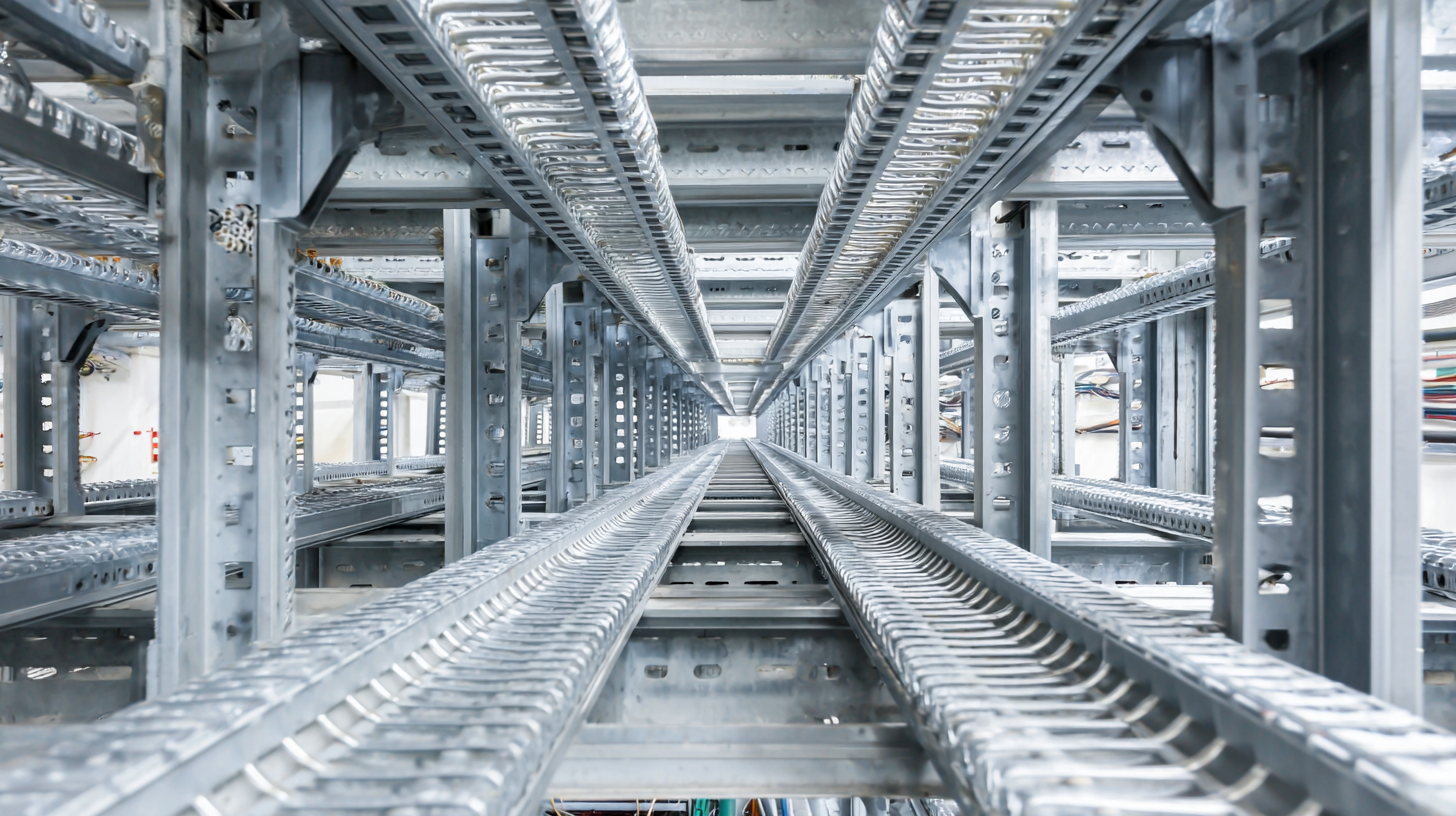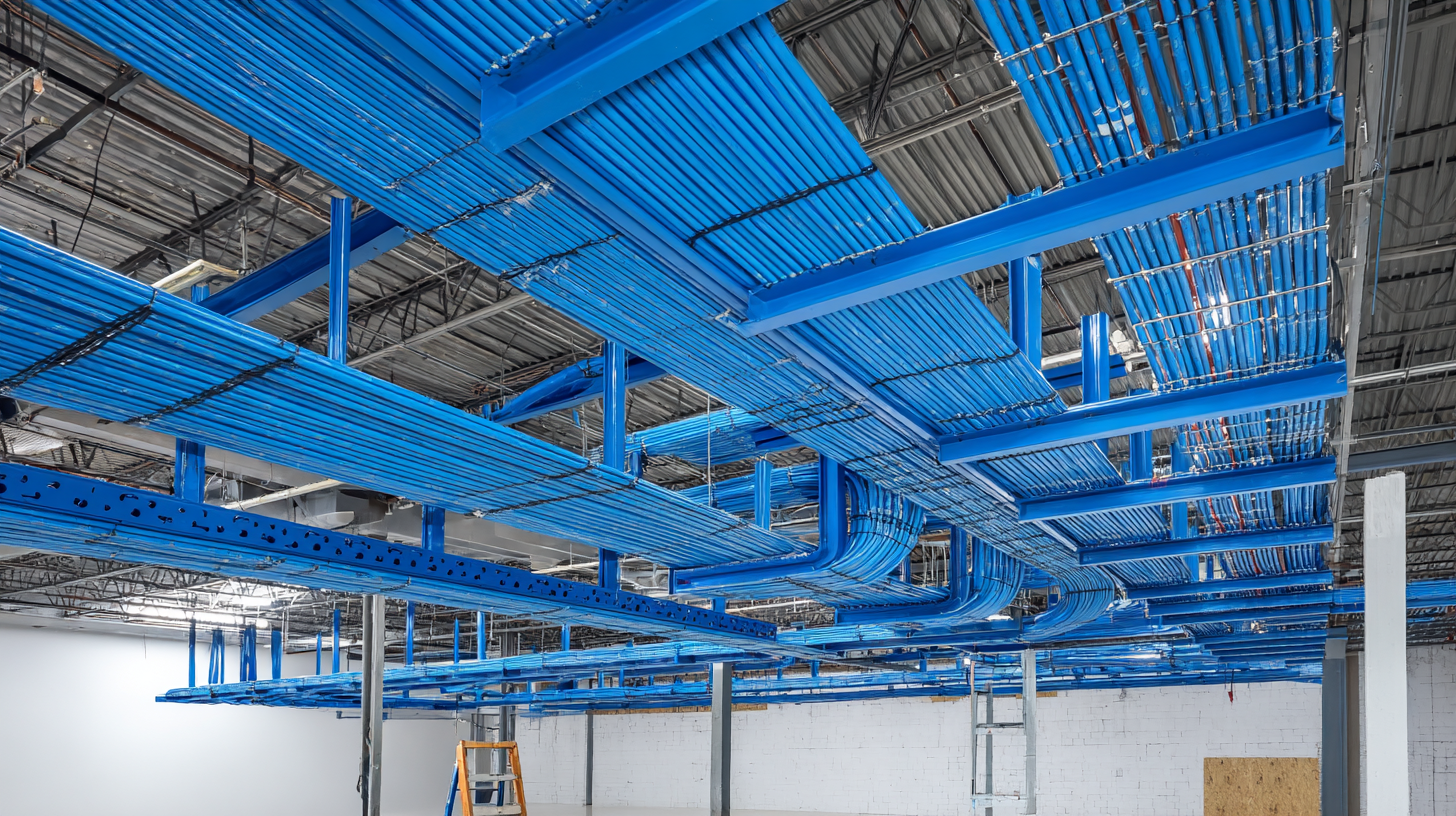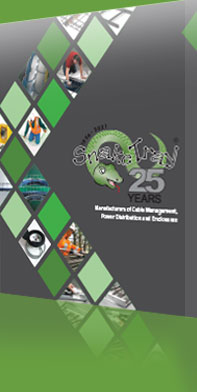How to Choose the Best Ladder Cable Tray: A Comprehensive Step-by-Step Guide
In the rapidly evolving electrical infrastructure market, the ladder cable tray serves as an essential component for efficient cable management. According to a recent industry report, the global cable tray market is projected to reach USD 6.2 billion by 2025, with a significant share attributed to ladder cable trays due to their versatility and ease of installation. This growing demand is driven by the surge in industrialization, particularly in emerging economies, and the increasing need for structured cabling systems in commercial buildings. Choosing the right ladder cable tray is crucial for ensuring optimal performance and safety in various applications, from telecommunications to power distribution. This comprehensive step-by-step guide will outline the factors to consider when selecting the best ladder cable tray to meet your project needs effectively.

The Importance of Ladder Cable Trays in Modern Infrastructure Development
Ladder cable trays play a crucial role in modern infrastructure development by providing efficient organization and support for electrical wiring and cabling. According to a report by Research and Markets, the global cable tray market is projected to grow to $5.5 billion by 2026, highlighting the increasing demand for reliable cable management solutions in various sectors, including telecommunications, power generation, and construction. The adoption of ladder cable trays significantly enhances system safety and accessibility, reducing the risks of faults and ensuring that maintenance can be performed efficiently.
Moreover, the integration of ladder cable trays into infrastructure not only complies with stringent safety standards but also facilitates improved air circulation around cables, reducing overheating risks. A study by Grand View Research indicates that the demand for cable trays with enhanced durability and corrosion resistance is increasing, as these trays are expected to withstand harsh environmental conditions. This trend emphasizes the significance of selecting appropriate materials and designs when choosing ladder cable trays for any project, ensuring long-term performance and reliability in critical infrastructure.
How to Choose the Best Ladder Cable Tray: A Comprehensive Step-by-Step Guide
| Criteria | Description | Importance |
|---|---|---|
| Material | Choose between aluminum, steel, or fiberglass based on the environment. | Durability and corrosion resistance are crucial for long-term use. |
| Load Capacity | Consider the weight of cables and any additional loads the tray must support. | Preventing overload ensures safety and compliance with regulations. |
| Width and Height | Ensure the dimensions fit within the designated installation space. | Proper sizing prevents overcrowding and allows for future expansion. |
| Ventilation | Select trays that provide adequate airflow to prevent overheating of cables. | Maintains the integrity and longevity of installed wires. |
| Installation Method | Assess whether the tray can be easily installed in your chosen location. | Eases labor costs and time during setup. |
| Regulatory Compliance | Ensure the product meets local and national building codes. | Helps avoid legal issues and ensures project safety standards. |
Key Factors to Consider When Selecting Ladder Cable Trays
When selecting the best ladder cable tray for your projects, there are several key factors to consider. First and foremost is the material of the tray. Options typically include steel, aluminum, or fiberglass, each presenting different strengths and resistances based on environmental conditions. For example, aluminum trays are lightweight and resistant to corrosion, making them ideal for outdoor applications, while galvanized steel trays offer higher strength and durability necessary for heavy-duty installations.
Another important aspect is the tray size and design. It's essential to assess the amount of cabling you expect to run through the tray and ensure there’s sufficient space for future expansion. Ladder cable trays come in various widths and heights, so consider both the current needs and any potential growth in cable management. Additionally, the spacing of crossbars and rungs impacts ease of installation and maintenance; a well-designed tray will allow for quick access and efficient cable routing. Ultimately, paying attention to these factors will enable you to choose a ladder cable tray that meets both your current requirements and future demands.
Emerging Technologies in Ladder Cable Tray Design for 2025
 As we look towards 2025, the design of ladder cable trays is primed for innovation driven by emerging technologies. The global cable management system market, valued at approximately USD 23.5 billion in 2024, is projected to experience a significant growth rate of 8.2% CAGR from 2025 to 2030. This growth is reflective of an industry that is increasingly recognizing the importance of efficient cable management solutions in both residential and commercial applications.
As we look towards 2025, the design of ladder cable trays is primed for innovation driven by emerging technologies. The global cable management system market, valued at approximately USD 23.5 billion in 2024, is projected to experience a significant growth rate of 8.2% CAGR from 2025 to 2030. This growth is reflective of an industry that is increasingly recognizing the importance of efficient cable management solutions in both residential and commercial applications.
With advancements in materials and design processes, the upcoming ladder cable trays are expected to incorporate features that enhance not only functionality but also sustainability. For instance, the integration of lightweight, yet durable materials will facilitate easier installation while reducing the overall carbon footprint of production. Moreover, innovations such as modular designs and smart cable management systems equipped with sensors are on the horizon, enabling real-time monitoring and organization of cables. These developments promise to elevate the performance and adaptability of cable trays, meeting the ever-evolving needs of businesses in a rapidly advancing technological landscape.
Comparative Analysis of Alternatives to Traditional Ladder Cable Trays
When selecting a ladder cable tray, it's crucial to explore alternatives to traditional models. While ladder trays are popular due to their structural integrity and ease of mounting, options like ventilated and trough trays may offer benefits that cater to specific installation needs. Ventilated trays allow for superior airflow and cooling in environments where temperature control is vital, while trough trays provide enhanced protection from falling debris and are ideal for sensitive areas.
**Tip:** Assess the environmental conditions of your installation site. If your cables will be exposed to moisture or corrosive elements, consider materials such as fiberglass or aluminum that resist corrosion and prolong the lifespan of your tray system.
Furthermore, modular cable trays present a flexible and scalable alternative. These trays can be adjusted or expanded as your project evolves, providing a cost-effective solution that adapts to future requirements. This adaptability is especially beneficial in large facilities that anticipate growth or changes in cable management.
**Tip:** Evaluate the present and future cable load. Ensure that whichever alternative you choose can handle the anticipated weight and spacing of your cables without compromising on safety and performance.

Industry Best Practices for Installation and Maintenance of Ladder Cable Trays
When it comes to installing ladder cable trays, adhering to industry best practices is crucial for ensuring both safety and efficiency. According to a recent report by the National Electrical Manufacturers Association (NEMA), improper installation can lead to up to a 25% decrease in performance and increase the risk of electrical failures. To mitigate these risks, it’s essential to assess the load capacity of the cable trays and select materials that meet or exceed the requirements of the installation environment. Adequate support spacing, typically every 10 feet for standard trays, is also vital to maintain stability.
**Tips:** Always consult your local codes and regulations when determining the installation specs for your cable trays. Use non-conductive spacers and support brackets to prevent contact with existing electrical systems, thereby reducing the potential for shorts or interference.
Regular maintenance is another key component of effective ladder cable tray systems. A study by the International Electrotechnical Commission (IEC) indicates that routine inspections can extend the lifespan of cable tray systems by over 30%. Regularly checking for signs of wear, ensuring that connections are secure, and clearing any obstructions can dramatically improve performance.
**Tips:** Schedule maintenance at least twice a year, and keep a log of all inspections and repairs to track the condition of the trays over time.
Importance of Factors in Choosing Ladder Cable Trays
This chart illustrates the importance of various factors when selecting the best ladder cable trays. Each factor is rated on a scale from 1 to 100, indicating its significance in the decision-making process.
